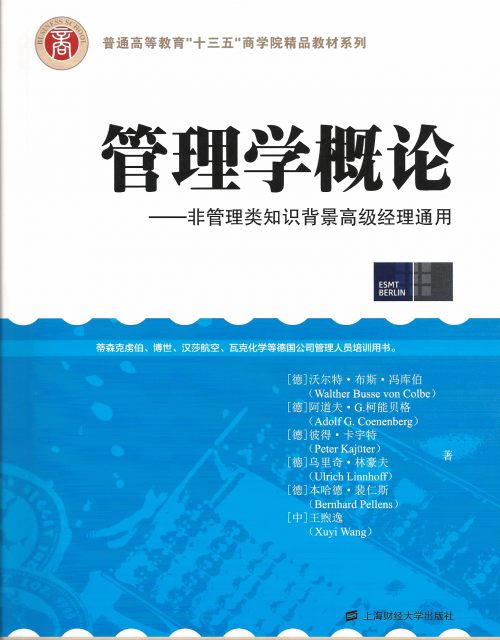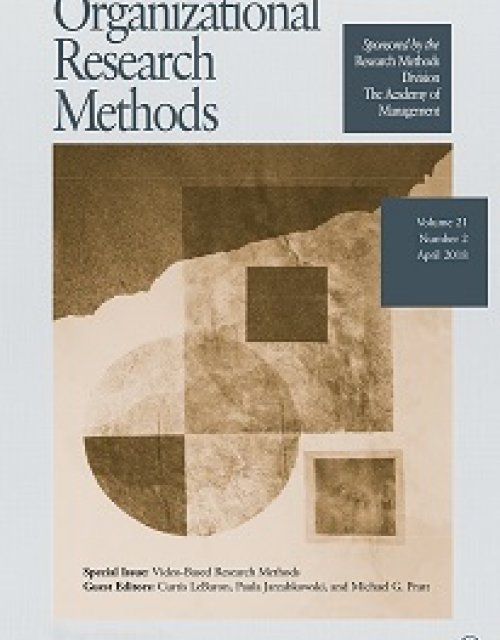Publication records
Subject(s)
Human resources management/organizational behavior; Management sciences, decision sciences and quantitative methods
Secondary Title
Lexikon Qualitätsmanagement
Edition
2nd ed.,
Pages
315–318
ISBN
978-3-486-58465-3
Subject(s)
Economics, politics and business environment
Keyword(s)
School feeding, learning, midday meal, primary school education
JEL Code(s)
I210, I250, O120
Subject(s)
Strategy and general management
Keyword(s)
Accounting, finance, capital budgeting, M&A, value based management, controlling
JEL Code(s)
M10
沃尔特·布斯·冯库伯、阿道夫·g.柯能贝格、 彼得·卡宇特、乌里奇·林豪夫、本哈德·裴仁斯等 、王煦逸所*的《管理学概论--非管理类知识背景高 级经理通用》一书,**部分介绍了企业管理的理念 ,基于这些理念,企业能够在市场竞争中立足,这里 涉及企业环境分析和由此得出的企业战略、客户导向 以及资方导向。面对急剧变化的市场环境,企业必须 做出反应,对企业的结构和流程做出有针对性的调整 。第二部分将介绍有关的措施:法律形式的选择、公 司治理、组织构架等。*后,本书论及财务方面的论 题:成本管理、投资核算、兼并重组管理、财务管理 、价值导向效益分析以及财务报告(第三和第四部分 )?br/> 本书按照模块化组织:每章都是一个独立的单元 ,可以在不涉及其他章节的情况下独立阅读。同时, 各模块之间又存在有机的联系。每章所附的习题帮助 读者加深对于各专题的理解?br/> 本书的目标读者是中国非管理类知识背景的企业 经理,他们希望通过自学、emba项目的学习或者专项 培训研读管理核心思想、方法和工具等。此外,本书 也有助于有多年管理经验的专家*新管理知识。通过 本书,读者可以得到有关企业管理方面系统的经验导 向概观。本书基于西欧企业管理的基本理念,并通过 德国的案例进行通俗易懂的阐述?br/>
Volume
1st ed.,
Pages
436
ISBN
978-7-5642-2406-6
Subject(s)
Strategy and general management
Keyword(s)
Complex systems, decision making, sustainability, risk assessment, big data, analytics, models, climate change
This case considers the CEO of a logistic company trying to form her own opinion about whether global warming is a real concern or simply a hoax. The case consists of two contradictory reports reviewing the existing evidences for global warming, from two scientific experts holding opposite views on the subject.
The case addresses one of the most fundamental problems of knowledge: How can organizations and leaders understand what cannot be fully observed? The issue is at the heart of managing long-term changes and possible sustainability risks faced by organizations. Changes or risks such as these are difficult to recognize, because they typically emerge from complex systems that are not fully observable. The global warming debate provides a perfect illustration of this issue. The teaching objectives of this case are to explore different approaches to infer changes and sustainability risks such as these, and to determine the role of data and analytics in these processes. In doing so, participants also learn about the main evidence for global warming.
The case has been used in both executive and MBA classes.
| buy now | buy now | buy now |
Subject(s)
Ethics and social responsibility
Keyword(s)
Corporate social responsibility, corporations, environmental sustainability, human resources, organizational learning, performance metrics, socially responsible business, transparency
JEL Code(s)
M000
Also available in Portuguese: Mensurando impacto: Sustentabilidade empresarial 2.0.
Subject(s)
Human resources management/organizational behavior
Keyword(s)
Multivariate analysis, computational modeling, team diversity, categorization salience, leadership
It is increasingly recognized that team diversity with respect to various social categories (e.g., gender, race) does not automatically result in the cognitive activation of these categories (i.e., categorization salience), and that factors influencing this relationship are important for the effects of diversity. Thus, it is a methodological problem that no measurement technique is available to measure categorization salience in a way that efficiently applies to multiple dimensions of diversity in multiple combinations. Based on insights from artificial intelligence research, we propose a technique to capture the salience of different social categorizations in teams that does not prime the salience of these categories. We illustrate the importance of such measurement by showing how it may be used to distinguish among diversity-blind responses (low categorization salience), multicultural responses (positive responses to categorization salience), and intergroup biased responses (negative responses to categorization salience) in a study of gender and race diversity and the gender by race faultline in 38 manufacturing teams comprising 239 members.
With permission of SAGE Publishing
Volume
19
Journal Pages
433–474
Subject(s)
Information technology and systems; Technology, R&D management
Keyword(s)
Change management, IT, benefits dependency network (BDN), digitalization
JEL Code(s)
O32, O33
Given all the attention that “digital” is getting at the moment, you would be forgiven for thinking that it is somehow new. In fact, the relentless drive to embrace digital technologies has been ongoing for many decades.
What also seems to have been forgotten are the lessons from these earlier attempts to leverage IT (remember that IT is a digital technology). Unfortunately, the history of IT investments in most organizations is far from stellar: Research over the years suggests that the overall failure rate of IT projects is around 70%. We know that when IT projects fail, it is usually not because the technology didn’t work (although this can sometimes be the case), but because the changes required at an organizational and employee level weren’t managed effectively. Quite simply, adding technology does not automatically confer expected benefits; these benefits have to be unlocked and this can only happen through achieving organizational changes.
ISSN (Print)
0017-8012
Subject(s)
Economics, politics and business environment
Keyword(s)
Economics, Econometrics and Finance
Secondary Title
An economist in the real world: The art of policy making in India
Journal Pages
591–593
Subject(s)
Ethics and social responsibility
Keyword(s)
Corporate social responsibility, business ethics, corruption in particular, governance and compliance, intercultural/cross-cultural management, cross-cultural ethics, challenges of internationalization/globalization
This four-part case series can be used to discuss business ethics, compliance/governance, integrity management, reacting to and preparing against corruption in the context of internationalization and allows to also briefly touch upon the issue of Corporate Social Responsibility (CSR). Case (A) describes a challenge IKEA was facing, while trying to enter Russia in 2000. The company was preparing to open its first flagship store on the outskirts of Moscow, only the first of several planned projects. After substantial investments in infrastructure and logistics, IKEA focused on marketing, but quickly faced a sudden complication. Its major ad campaign in the Moscow Metro with the slogan “[e]very 10th European was made in one of our beds” was labeled “tasteless”. IKEA had to stop the campaign because it “couldn’t prove” the claim. Soon Lennart Dahlgren, the first general manager of IKEA in Russia must have realized that the unsuccessful ad campaign was going to be the least of his problems: A few weeks before the planned opening, the local utility company decided not to provide their services for the store if IKEA did not pay a bribe. What should IKEA and Lennart Dahlgren do? Was there any alternative to playing the game the Russian way, and paying? The subsequent cases (B), (C), and (D) describe IKEA’s creative response to the challenges described in case (A), and then report about new challenges with alleged corruption within IKEA and in the legal environment, and finally raise the question whether IKEA can be considered to have a social responsibility to fight corruption on a societal level in order to build the platform for its own operation in Russia.
| buy now | buy now | buy now |

